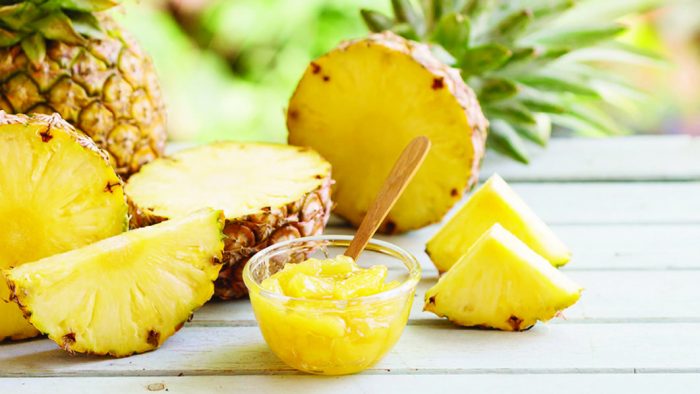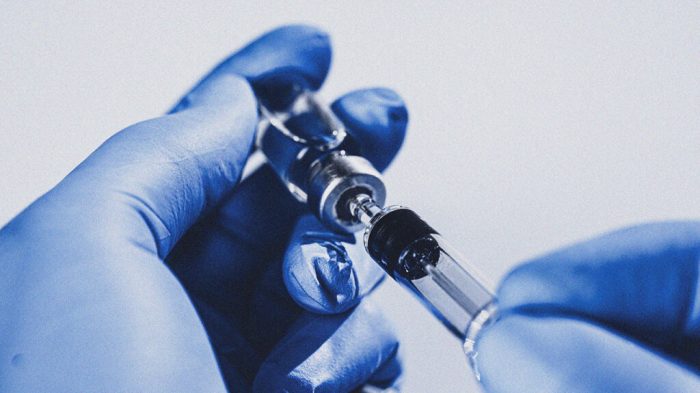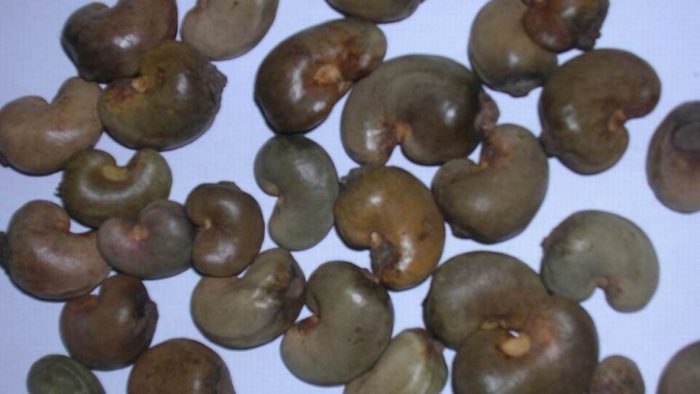Scientists have made giant strides in the search for natural cures for Coronavirus disease (COVID-19). They found that bromelain-rich pineapple stem represents a viable option as an antiviral for treating not only COVID-19 but also potential future outbreaks of other coronaviruses.
Scientists have also confirmed the efficacy of Aloe vera, pineapple, Sansevieria masoniana cream on skin wounds infected with multi-drug resistant Staphylococcus aureus.
Scientists have also found that pineapple juice contains some active ingredients with uterine contractile effects and may cause abortion just like oxytocin after oral administration. They also demonstrated that unripe rind and pulp of pineapple could be used to accelerate wound healing in diabetics.
Also, the World Health Organisation (WHO) has agreed on to rules for the testing of African herbal remedies to fight COVID-19. It said sound science would be the sole basis for safe and effective traditional therapies to be adopted.
Any traditional remedies that are judged effective could be fast-tracked for large-scale manufacturing.
The WHO said the new rules were aimed at helping and empowering scientists in Africa to conduct proper clinical trials.
Meanwhile, results of a recent research endeavour from the United States indicate that bromelain rich pineapple (Ananas comosus) stem may be utilised as an antiviral agent against COVID-19, but also for potential future coronavirus outbreaks.
The study titled “Bromelain Inhibits SARS-CoV-2 Infection in VeroE6 Cells” was published on September 17, 2020, in the journal bioRxiv.
Botanically called Ananas comosus, pineapple belongs to the plant family Bromeliaceae.
According to The useful plants of west tropical Africa, Vol 1 by H. M. Burkill, (…the unripe fruit is purgative (loosen stools and increase bowel movements), diuretic (promotes the production of urine), anthelmintic (worm expeller), expectorant (cough medicine) and aborifacient (induces abortion). It is taken in Nigeria as an emmenagogue (a substance that stimulates or increases menstrual flow), while the flowers are taken for the same effect in Gabon and in Guinea. It is also used in Guinea as a vermifuge (worm expeller) especially against Ascaris (parasitic worm). The unripe fruit is regarded in Guinea as good for bladder-troubles, and the root for dropsy, perhaps by causing a diuretic effect. Leaf-sap is administered, with powdered pimento added, as an enema in Ivory Coast for urethral discharge, while in Ghana immature fruits are taken for venereal disease. Juice from young fruit is taken in Congo for vertigo, and with Costus afer/sugar cane/bush cane Ker-Gawl. (Costaceae) and salt is used to wash smallpox sores.
“Leaf-sap is considered in Gabon to be good for burns and wounds. In Sierra Leone a warm infusion of the leaves has been reported good for fomenting a spider-bite, alternating the treatment with an application of pieces of the fruit. The leaves, ground with copper or brass filings, and palm oil have been found effective in Ghana in healing ulcers. Difficulty in breathing is treated in Congo by taking a root-decoction. Juice from a roasted fruit is made in Ghana into a thick gruel called flaku, which is given to children and sick persons.
“The fruit is rich in vitamin C, ascorbic acid being present at 24.4 to 96.3 mg per cent: it is present in the fresh young leaf also at 29.4 mg per cent (19). The fruit, ripe and unripe, the leaves and the stalk all contain bromelain, a powerful proteolytic enzyme similar to papain found in pawpaw Carica papaya (Caricaceae). It does not, however, coagulate milk, as does papain. It is anthelmintic and is used in tropical America, Brazil, and India. Alkaloid has also been reported in the fruit and root. There is a superstition in Ghana that a sick person near to death will express a great desire to eat pineapples”.
Meanwhile, previous studies have demonstrated that bromelain can be utilised to treat patients with inflammation and pain and that the compound is well absorbed and with prolonged biological activity. All of these advantages can be exploited when treating patients with COVID-19.
Severe acute respiratory syndrome coronavirus-2 (SARS-CoV-2) is already well known for its rapid human-to-human transmission, responsible for the relentless pandemic spread of dangerous COVID-19.
Scientists are making advances in understanding SARS-CoV-2 immunology. Studies have shown that the initial interaction between Transmembrane Serine Protease 2 (TMPRSS2), primed spike glycoprotein (S-protein), and host cell receptor angiotensin-converting enzyme 2 (ACE-2) is a pre-requisite for cell entry and COVID-19 pathogenesis.
Until now, infected patients are treated with different antiviral, anti-inflammatory, and antimalarial agents. Nevertheless, the response rate is relatively modest, and there is a need to confirm both the safety and efficacy profile of those drugs against COVID-19.
But repurposing existing drugs or develop new (either virus-based or host-based) antivirals against SARS-CoV-2 is still a way forward. The pertinent question is could bromelain – a dietary supplement isolated from pineapple stem used to treat patients with pain, inflammation, and thrombosis – be used for COVID-19 patients as well?
This hypothesis was tackled by researchers from the University of Nebraska Medical Centre and the United States Food and Drug Administration’s (FDA’s) Centre for Biologics Evaluation and Research (CBER) in Silver Spring in the United States, with rather exciting findings.
According to the researchers, bromelain inhibits/cleaves the expression of ACE-2 and TMPRSS2, it cleaves/degrades SARS-CoV-2 spike protein and inhibits S-Ectodomain binding and SARS-CoV-2 infection.
Since ACE-2 and TMPRSS2 are full of cysteine residues that establish disulphide bonds to support the protein structure, this research group primarily appraised the effect of bromelain (which is a cysteine protease) on ACE-2 and TMPRSS2 expression.
The full-length genome sequences of 45 SARS-CoV-2 isolates were analyzed in-depth. At the same time, the African green monkey kidney epithelial cells (Vero E6) was chosen as the primary cell line utilized in this study.
The researchers cloned and subsequently expressed SARS-CoV-2 S-protein ectodomain that contains insect cell secretion signal. Next, they have determined the interaction between the purified S-Ectodomain and human recombinant ACE-2 using surface plasmon resonance technology (that is, real-time detection of biomolecular interactions).
“Finally, they have expressed SARS-CoV-2 S-Ectodomain tagged with a green fluorescent protein in Tni insect cells from Trichoplusia ni (that is, cabbage looper). Surface resonance plasmon and Luminex assay were used to reveal the purified S-Ectodomain binding to human ACE-2, as well as immune-reactivity with COVID-19 positive samples.”
The study authors said: “We demonstrate that bromelain (isolated from pineapple stem and used as a dietary supplement) treatment diminishes the expression of ACE-2 and TMPRSS2 in VeroE6 cells and dramatically lowers the expression of S-Ectodomain.”
More specifically, it was shown that bromelain decreases the expression of both ACE-2 and TMPRSS2 in a dose-dependent manner in Vero E6 cells. Moreover, bromelain’s cysteine proteolytic activity was notably higher in ACE-2 when compared to TMPRSS2.
Even more important was the finding that the bromelain treatment was able to halt the interaction between S-E
Furthermore, the study indicated that the SARS-CoV-2 spike glycoprotein has both highly sialylated N- and O-linked glycans, and bromelain managed to cleave it. Consequently, a loss of negatively charged sialic acid groups in the N- and O-linked glycans may cause a decreased mobility shift of S-Ectodomain.
Bromelain as a broad-spectrum antiviral
“For the first time, our results demonstrate that bromelain can inhibit SARS-CoV-2 infection by targeting all three host ACE-2 and TMPRSS2, and SARS-CoV-2 S-proteins,” the study authors wrote.
Also, another study published in the journal Advances in Pharmacological and Pharmaceutical Sciences has shown the efficacy of Aloe vera, pineapple (Ananas comosus), and Sansevieria masoniana cream on skin wounds infected with multi-drug resistant Staphylococcus aureus (MRSA).
The researchers are from Integrated Laboratory, Faculty of Health, University of Muhammadiyah Sidoarjo, and Faculty of Veterinary Medicine, University of Wijaya Kusuma Surabaya, both in East Java, Indonesia.
The researchers noted: “The tropical area has a lot of herbal medicines such as Aloe vera (AV), Ananas comosus (AC), and Sansevieria masoniana (SM). All three have a unique potential effect as an antibacterial and wound-healing promoter.
“The aim of this study is to explore the role of AV, AC, and SM on the skin wound infected with methicillin-resistant Staphylococcus aureus (MRSA). Forty-five adult female Sprague Dawley rats weighing 250–300 grams were divided into five groups. All the groups were exposed to two round full-thickness punch biopsy and infected with MRSA. The group C was the control group/untreated; group BC was treated with base cream/without extract; group AV was treated with 75 per cent AV cream; group AC was treated with 75 per cent AC cream, and group SM was treated with 75 per cent SM cream.
“The wounds were observed on days 5, 10, and 15. The healing of skin wounds was measured by a percentage of closure, skin tensile strength, and histopathology. The result showed that AV, AC, and SM have a similar potential effect on healing in the wound that was infected with MRSA compared to the groups C and BC. It shows that all three herbal formulations can be used as alternative therapy to the wound infected with MRSA.”
Staphylococcus aureus is a common opportunistic bacterium in both human skin and animal skin. This bacterium became a serious problem, as it is resistant to methicillin. Nowadays, MRSA is a worldwide problem and is not limited geographically.
Several studies have shown that MRSA is also one of the leading bacteria causing skin and soft tissue infection. MRSA infection causes significant morbidity and mortality, including septic shock, endocarditis, pneumonia, and bacteremia. The major route of infection of MRSA is via open wounds. Open wounds such as excisional wounds are complicated by infection, and they cause prolonged and delayed wound healing. The delayed wound healing maybe because there is a failure of CD8+ (a marker for the immune function) in another mediated immune response to eliminate the bacteria. The failure is caused by incorrect treatments or high bacterial concentration.
Herbal medicine is an alternative therapy to promote wound healing by activating the immunological complex. It is reported that the active ingredients of Aloe vera (AV) could be used as anti-bacterial and wound-healing promoters. On the other hand, Ananas comosus (AC) contains bromelain, and it is widely administered as an anti-inflammatory and wound-healing agent. The previous study reported the medicinal effects of another Sansevieria sp.; however, the efficacy of Sansevieria masoniana (SM) in wound healing is still complicated.
The researchers concluded: “The present study demonstrated that Aloe vera (AV), Ananas comosus (AC), and Sansevieria masoniana (SM) have potential effects to promote the healing of infected wounds.”
Also, another study titled “Oxytocic effect of Ananas comosus fruit juice on isolated pregnant rats uteri” published in Nigerian Veterinary Journal concluded: “The results, therefore, suggest that Ananas comosus juice contain some active ingredients with uterine contractile effects which may cause abortion in the same manner as oxytocin but may have been metabolized after oral administration.”
The study sought to find out whether Ananas comosus (pineapple) juice can cause abortion in gravid albino rats. Thirty-two pregnant albino rats were used in two separate in vivo experiments. The first set of 16 pregnant rats were divided into four groups and groups two, three, and four were assigned undiluted pineapple juice for 24 hours, 36 hours, 48 hours respectively, while group one served as control. The pregnant rats were monitored closely for possible abortions until they littered. The procedure was repeated with the other set of 16 pregnant rats. The effect of the juice was also determined by an isolated pregnant rat uterus. Results obtained in the two separate in vivo trials showed no abortions as the rats had their young ones at term. In the in vitro work, the juice however induced strong uterine contractions similar to that of oxytocin…”
Meanwhile, researchers at the Department of Anatomy, College of Medicine, University of Ibadan, Oyo State, have established that the unripe rind and pulp of Ananas comosus can accelerate wound healing in people with diabetes.
The study was published in the Journal of Complementary and Alternative Medical Research.
Until now, one of the sequelae of diabetes mellitus is a chronic foot ulcers. A sequela is a pathological condition resulting from a disease, injury, therapy, or other trauma. This study investigated the wound-healing propensity of the pulp and rind of Ananas comosus in diabetic Wistar rats.
According to the study, the excisional wounds of twenty-four adult wistar rats with induced diabetes in four groups of six each were dressed with the pulp powder (PPD), pulp extract (PED), rind powder (RPD), and rind extract (RED) of A. comosus daily till healed. Also, the mean wound contraction rates were calculated from the wound areas every three days. Granulation tissue was biopsied from an animal per group on days three, six, and nine for histopathological evaluation. Each of these groups had a corresponding equal number control group with similar procedures performed.
According to the results, the mean wound contraction rates of the rind pulp diabetic (RPD) and rind extract diabetic (RED) groups paralleled those of their respective control group (RPC, REC), as they were not significantly different. Also amongst the diabetic groups, the rind of A. comosus demonstrated greater wound healing capability over the respective pulp counterpart (PPD, PED) as evidenced by significantly higher mean wound contraction rates. Histopathologic features of the granulation tissues and scars of the diabetic groups were similar to those of the control groups.”
The researchers concluded: “Although, both the rind and pulp of unripe A. comosus either in extract or powder formulation were shown in this study to possess excellent healing potentials in diabetic wounds, the rind appeared to be better off and maybe a viable alternative to the wound dressing materials currently in use in the management of diabetic wounds/ulcers.”
Also, other studies have demonstrated that pineapple could be the next natural therapy for osteoarthritis.
Pineapple contains bromelain, a group of enzymes, which is a potential treatment for osteoarthritis due to its anti-inflammatory and analgesic qualities. Bromelain extracts can be obtained from pineapples, particularly from the fruit core.
Several studies have suggested that bromelain’s anti-inflammatory effect derives from its ability to promote serum fibrinolytic activity as well as decrease plasma fibrinogen and bradykinin; the latter assists in reducing blood vessels’ permeability and thus, pain and swollen ankles, feet, and legs (oedema). Fibrinolysis is a process that prevents blood clots from growing and becoming problematic. Serum is the fluid and solute component of blood, which does not play a role in clotting. Bradykinin is a peptide that promotes inflammation.
Bromelain’s anti-inflammatory effect is further achieved through its ability to mediate prostaglandin, which is involved in the inflammation process. Consumption of bromelain extracted from pineapple offers a potential, natural, and safe alternative to conventional pharmaceutical therapy for osteoarthritis.
Currently, bromelain is available over-the-counter as a health supplement and is commonly used to treat acute inflammation and sports injuries. This substance may be used as a stand-alone treatment or in combination with other medications, whether in the topical or oral route. Doctors warn people currently taking blood-thinning medication such as Warafin or Pradaxa, it is best to avoid bromelain, which has an anti-platelet effect and therefore, can increase the risk of excessive bleeding. Bromelain may also enhance the effect of certain drugs such as antibiotics, sedatives, and anti-seizure medications.










